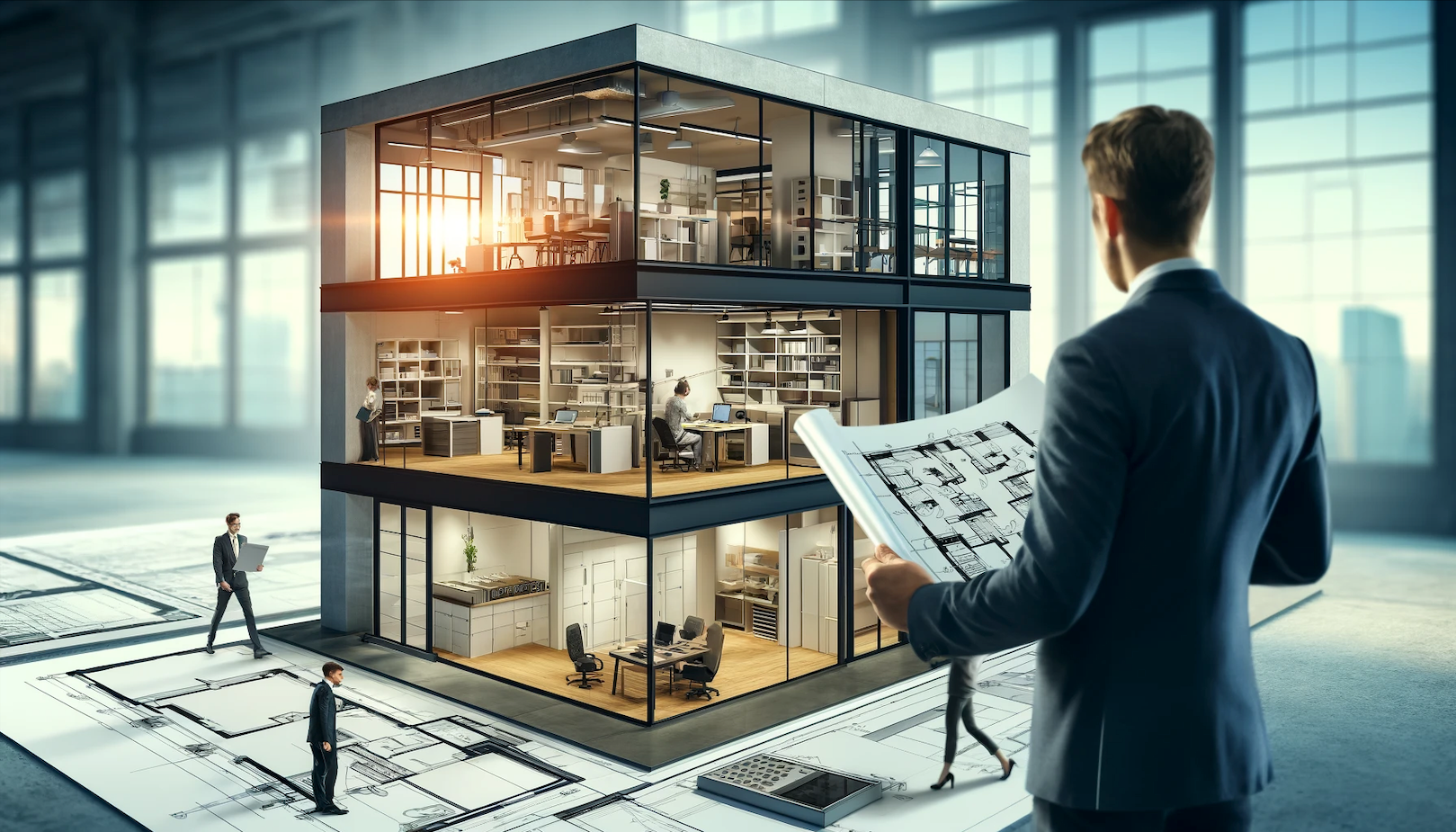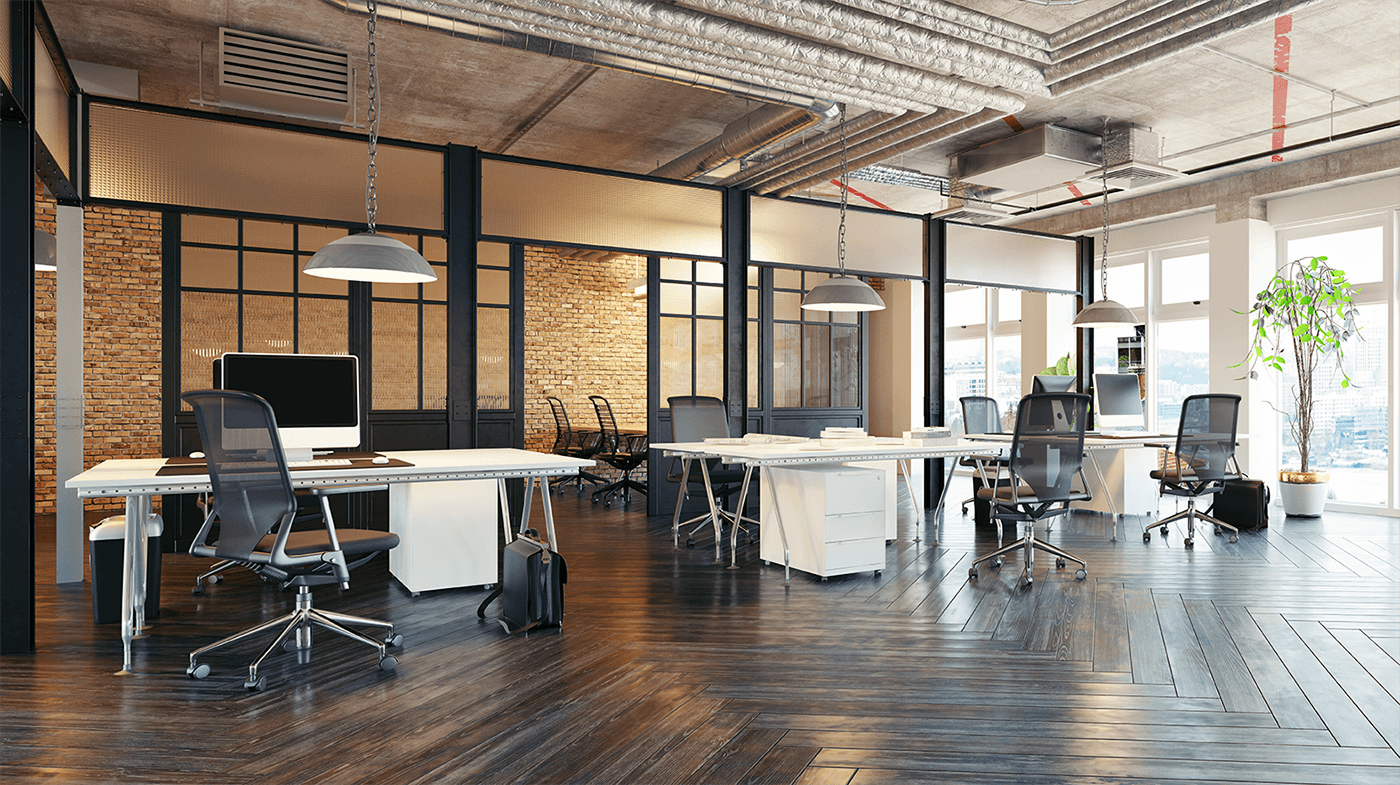Understanding Flex Space: A Key to Versatile Commercial Real Estate
Flex spaces offer versatile layouts, mixed-use capabilities, and strategic locations, making them a cost-effective solution for modern businesses. These spaces support various operations, from offices to light manufacturing, providing the flexibility needed to adapt to changing business needs and promote efficiency.
Abhinil Kumar
Author

In today’s rapidly evolving business landscape, the adaptability of commercial real estate spaces plays a pivotal role in accommodating the dynamic needs of various industries. Flex spaces, characterized by their versatile design and multifunctional purposes, have emerged as a vital component in this adaptive real estate paradigm. This blog delves into the essence of flex spaces, exploring their benefits, uses, and why they are becoming a preferred choice for businesses looking to thrive in a modern commercial environment.
What is Flex Space?
Flex space is a concept in commercial real estate that offers a versatile and adaptable environment, capable of accommodating multiple operations under one roof. It provides businesses with the flexibility to tailor their workspace to meet their specific needs, allowing them to add or remove features as required.
One unique feature of flex spaces is their ability to be easily modified or reconfigured. This means that businesses can adjust the layout and use of the space to accommodate changing operational requirements. For example, partitions can be added or removed to create open spaces or private offices, depending on the business’s needs.
Furthermore, flex spaces often come equipped with a range of amenities that enhance the work experience. These amenities can include shared conference rooms, kitchen facilities, parking spaces, and common areas for networking and collaboration. By providing these amenities, flex spaces offer additional value to businesses and contribute to a more productive and efficient work environment.
The benefits of flex spaces for businesses are numerous. They are suitable for both long-term and short-term needs, allowing businesses to scale up or downsize their operations without the hassle of relocating. This flexibility enables businesses to adapt to market changes quickly and cost-effectively. Additionally, the ability to share resources and common areas in flex spaces can lead to cost savings for businesses, as they only pay for the space and amenities they require.
The key characteristics of flex spaces include:
- Versatile Layouts: Flex spaces are renowned for their versatile layouts**,** which feature open floor plans that can be customized according to the specific needs of tenants. This adaptability allows businesses to design their workspace in a way that maximizes efficiency and fosters a collaborative environment. For instance, a start-up could configure a large open area into a co-working -style environment while still having the flexibility to section off parts of the space for private offices or meeting rooms as the company grows. The ability to easily adjust and subdivide these spaces is particularly appealing to industries such as tech, design, and engineering, where project team sizes and space needs can change frequently. This flexibility not only helps in optimizing operational efficiency but also aids in managing costs, as businesses can modify their usage of space without relocating to new premises.
- Mixed-use Capability: Another significant characteristic of flex spaces is their mixed-use capability. These spaces are meticulously designed to accommodate a wide range of business activities, making them an excellent choice for companies that operate in multiple sectors or require diverse functionalities from their premises. For example, a flex space might serve dual purposes, such as a light manufacturing facility and a sales office. This multipurpose nature often includes features like higher ceilings suitable for equipment, reinforced floors capable of supporting heavy machinery, and office areas equipped with advanced telecommunications infrastructure. Such features ensure that businesses can efficiently handle industrial operations and administrative tasks in the same location, enhancing productivity and streamlining operations.
- Accessibility: Accessibility is a crucial aspect of flex spaces, particularly their location in industrial parks or on the periphery of urban centers. These locations are strategically chosen to ensure easy access to major transportation routes, which is vital for businesses that depend heavily on logistics and shipping. The accessibility of these areas helps in reducing transportation costs and improving supply chain efficiency. Moreover, flex spaces often come with ample parking and loading areas, accommodating a significant volume of vehicles and goods. This feature is particularly beneficial for businesses that expect frequent deliveries, have a large staff, or serve numerous customers daily. The convenience of accessibility not only enhances operational efficiency but also improves the work environment for employees.

Types of flex spaces
Flex spaces refer to customizable workspaces that can adapt to the changing needs of businesses. Here are the different types of flex spaces and their characteristics:
- Coworking spaces: These are shared workspaces where individuals from different companies work in close proximity. They offer amenities like high-speed internet, meeting rooms, and community events. Examples include WeWork, Regus, and Impact Hub. Coworking spaces are ideal for freelancers, startups, and small businesses as they provide cost-effective options and opportunities for networking and collaboration.
- Business incubators: These are spaces specifically designed to support early-stage startups. They provide resources like mentorship, networking opportunities, and infrastructure support. Examples include Y Combinator and 1871. Business incubators focus on nurturing innovative ideas and accelerating the growth of startups.
- Accelerator programs: Similar to business incubators, accelerator programs provide resources and support to startups. However, they have a fixed duration (usually a few months) and offer a more intensive program to accelerate the growth of the startups. Examples include Techstars and Seedcamp.
- Flexible office spaces: These are professionally managed office spaces that offer flexible lease terms and customizable layouts. Examples include CIC and Knotel. This type of flex space caters to businesses with changing space requirements, allowing them to scale up or down easily.
The Advantages of Flex Spaces
Flex spaces provide numerous advantages that cater to the evolving demands of modern businesses:
- Cost-Effectiveness: Flex spaces often offer lower rent compared to traditional office spaces or specialized industrial spaces, primarily due to their locations and multipurpose nature. This makes them particularly attractive to startups and SMEs (Small and Medium Enterprises) looking to minimize overhead costs.
- Scalability: As businesses grow or change their operational focus, flex spaces can adapt to new demands without the need for relocation. This scalability ensures that companies can expand their office space, increase production areas, or adjust their layout with minimal disruption.
- Enhanced Collaboration: The open layout that is typical in many flex spaces fosters a collaborative environment, facilitating better communication and teamwork among employees. This is particularly beneficial for industries such as tech and creative sectors where project collaboration is crucial.
- Strategic Location: Flex spaces are usually situated in locations that balance the benefits of urban and suburban settings. They provide ease of access to major transportation routes, which is essential for logistics-heavy businesses, and offer a quieter, less congested environment, which can be more pleasant for staff.

Advantages of Flex Spaces
Challenges and Considerations
While flex spaces offer significant advantages, there are also challenges and considerations that businesses must address:
- Customization Costs: Although flex spaces are versatile, the initial setup or ongoing modifications to the space to meet specific business needs can be costly.
- Zoning and Compliance Issues: Depending on the location, there may be zoning restrictions or compliance requirements that limit certain types of business activities, particularly those involving manufacturing or chemicals.
- Operational Disruptions: For some businesses, the open space concept might lead to disruptions, especially if different operational activities (like manufacturing and client meetings) occur in the same vicinity without proper soundproofing or space division.
Flex Space in Commercial Real Estate Markets
The flex space concept is significantly reshaping commercial real estate markets. As the demand for more adaptable and cost-efficient spaces grows, developers are increasingly focusing on creating properties that can attract a diverse range of tenants. This trend is evident in the rise of new flex space developments in both urban fringes and suburban areas, accommodating the spread of industries from e-commerce to biotech.
The evolution of flex spaces is also influencing real estate investment strategies. Investors are seeing the potential for high returns on flex properties due to their lower vacancy rates and the broad appeal to a variety of business tenants—from startups to established companies seeking innovation in their operational processes.
Conclusion
Flex spaces represent a modern solution to the changing needs of businesses in a dynamic economic landscape. They offer the flexibility, cost efficiency, and scalability that businesses require to adapt and thrive. For companies seeking practical and versatile real estate solutions, and for investors looking for opportunities in commercial real estate, flex spaces offer promising potentials. As the commercial real estate industry continues to evolve, the role of flex spaces is likely to grow, reflecting broader trends towards efficiency, collaboration, and adaptability in business practices.
FAQs
What is a flex space in commercial real estate? Flex space refers to a type of commercial property that features open, adaptable floor plans which can be customized to suit a variety of business activities, ranging from industrial work to office administration. These spaces are known for their versatility and are often located in accessible industrial parks or at the edges of urban centers.
How does the design of flex spaces support multiple business functions? Flex spaces are designed with mixed-use capability, allowing them to support diverse functions under one roof. Features such as high ceilings, durable flooring, and modular office setups enable businesses to conduct manufacturing, assembly, and office work simultaneously without interference.
Why are flex spaces considered cost-effective? Flex spaces are generally more affordable than traditional commercial spaces because their open layouts and location in less central areas reduce construction and maintenance costs. This cost-effectiveness is enhanced by the flexibility of the space, which can adapt to business growth without the need for relocation.
What are the advantages of locating a business in a flex space near urban centers? Locating in a flex space near urban Discover the benefits and versatility of flex spaces in commercial real estate, ideal for businesses seeking adaptable and cost-effective work environments.centers provides businesses with better accessibility for employees and logistics, while also offering connectivity to major transport routes. This strategic placement helps in minimizing transit times and costs, providing quick access to city amenities and client bases without the congestion and high price tag of central urban spaces.
Can flex spaces accommodate high-tech industries? Yes, flex spaces are well-suited for high-tech industries due to their ability to integrate sophisticated office setups with industrial-grade facilities. This adaptability is ideal for tech companies that may need space for R&D, product development, and scalable team environments all within the same premises.


